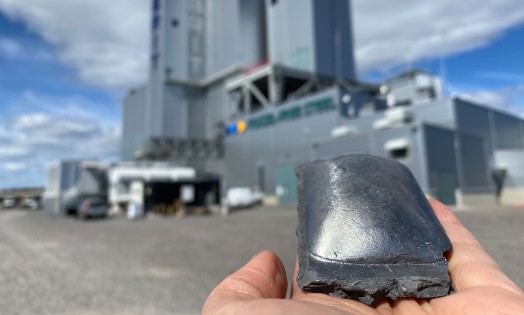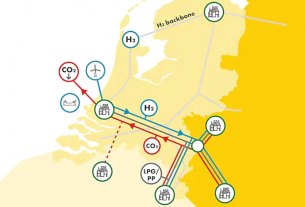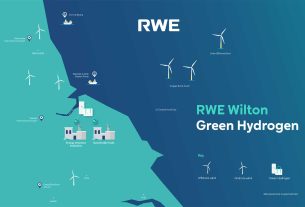Sweden – SSAB, LKAB, and Vattenfall have now pilot-scaled the world’s first hydrogen-reduced sponge iron.
The HYBRIT initiative’s technological breakthrough captures approximately 90% of emissions associated with steelmaking and is a crucial step toward fossil-free steel.
Reducing iron ore with fossil-free hydrogen
The HYBRIT pilot plant in Luleå, Sweden, has completed sponge iron test production, demonstrating that it is possible to reduce iron ore using fossil-free hydrogen gas rather than coal and coke to remove the oxygen. The output has been consistent and of high quality. So far, around 100 tonnes have been produced. This is the first time that hydrogen produced using fossil-free power has been employed on a trial scale in the direct reduction of iron ore. In principle, the goal is to remove carbon dioxide emissions from the steelmaking process by utilizing solely fossil-free feedstock and fossil-free energy across the value chain.
Hydrogen-based reduction is a vital step toward future fossil-free iron and steel production. Through HYBRIT, SSAB, LKAB, and Vattenfall aspire to construct the most efficient value chain from mine to steel, with the goal of being the first to market with fossil-free steel on an industrial scale in 2026.
Successful pilot project
HYBRIT, a joint project of SSAB, LKAB, and Vattenfall, began testing operations in the pilot plant built with help from the Swedish Energy Agency last year. The technology is constantly evolving, and the sponge iron that has been successfully manufactured utilizing hydrogen technology is the feedstock for the future fossil-free steel.
The hydrogen used in the direct reduction process is produced through the electrolysis of water using fossil-free electricity and can be used immediately or saved for later use. HYBRIT began construction on a pilot-scale hydrogen storage facility close to the direct reduction pilot plant in Luleå in May.




